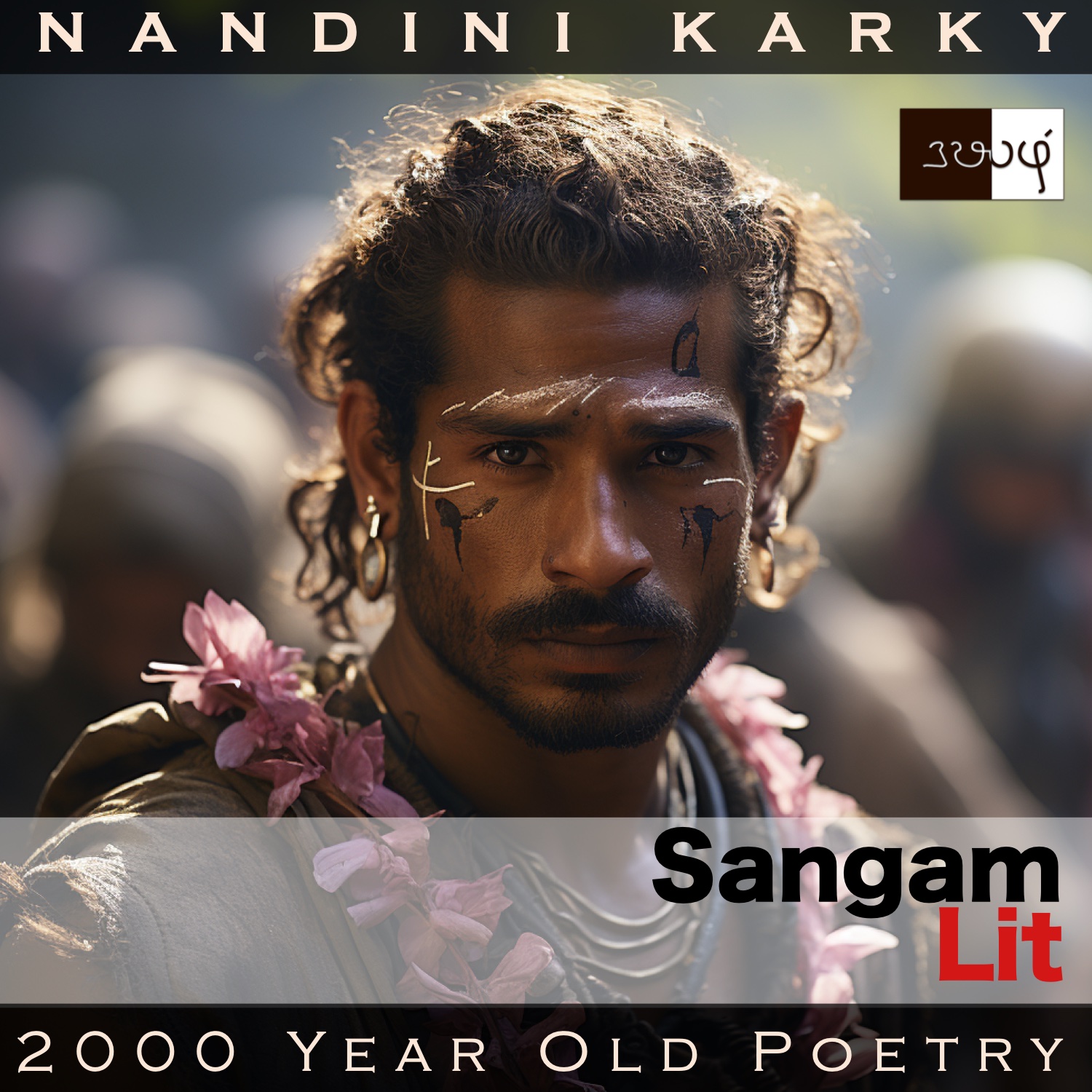Podcast: Play in new window | Download
Subscribe: Apple Podcasts | Spotify | Amazon Music | Android | iHeartRadio | TuneIn | RSS | More
In this episode, we take in a startling sight amidst a battle, as depicted in Sangam Literary work, Puranaanooru 271, penned by the poet Veri Paadiya Kaamakanniyaar. Set in the category of ‘Nochchi Thinai’ or ‘Defence from within’, the verse reveals the multiple uses of a flower in Sangam times.

நீர் அறவு அறியா நிலமுதல் கலந்த
கருங் குரல் நொச்சிக் கண் ஆர் குரூஉத் தழை,
மெல் இழை மகளிர் ஐது அகல் அல்குல்,
தொடலை ஆகவும் கண்டனம்; இனியே,
வெருவரு குருதியொடு மயங்கி, உருவு கரந்து,
ஒறுவாய்ப் பட்ட தெரியல் ஊன் செத்து,
பருந்து கொண்டு உகப்ப யாம் கண்டனம்
மறம் புகல் மைந்தன் மலைந்தமாறே!
A tiny song that delves into the territory of soldiers defending a fort from within. This poet who has sung many songs involving the ‘Veri ritual’ in Sangam Aham poems turns her attention to the ‘Puram’ aspect of their life. Her words can be translated as follows:
“In a land that knows not dearth of water, rising sturdily are the dark and dense leaf clusters of the ‘Nochchi tree’, beautiful to behold. I have seen these flowers as a garland around the beautiful, wide waists of maiden wearing delicate leaves. Now, these flowers are mixed with fearsome blood, altered in form and I see that crushed neck garland, thought to be flesh and snatched by a vulture and carried high, as it was worn by that brave warrior!”
Let’s delve into the nuances here. The poet starts by talking about a land which is so fertile that it has never suffered a scarcity of water, and here thrives a particular tree called as ‘Nochchi’, having thick clusters of flowers blooming bright on its branches. A moment to meander and look at this ‘Nochchi’ tree, which is also known as ‘Mayilai Nochchi’ in contemporary Tamil and simply ‘Mayilil’ in Malayalam. The significance of this word ‘Mayil’ or ‘peacock’ used in both languages will become clear when we learn of the English name of this tree which is ‘Peacock Chaste Tree’ or ‘Peacock foot tree’. We have already witnessed this information in Kurunthogai 138, where the leaves of this tree are compared to a peacock’s foot!
Returning to the verse at hand, we find the poet remarking how the flowers of this tree were preferred by maiden to be worn around their waists as part of their attire of leaves. From that domestic preference, the poet now points to how a garland of these flowers are lying soaked in blood, and seeing this, a roving vulture, thinking it’s a strand of flesh, swoops over it, snatches it and soars into the sky. The poet reveals that the garland had got to that state because it was worn by a soldier, who was defending the fort of that land bravely from enemy attack, and it was possibly severed from his neck by an enemy sword. The essential element we infer from this verse is that flowers formed an inseparable part of the lives of these Sangam folk. While flowers were used for ornamentation as it’s done even today, it also had significant other meanings. When soldiers wore one type of flower, it meant something and when they wore another type of flower, it indicated a completely different intention. This makes me think that flowers were the identifying factors of a particular army in a battle. It’s the flowers worn by a soldier that defined whether he was on the same side or the opposing side and meant life or death in the heat of the battle. Intriguing how a gentle thing like a flower could be endowed with such a violent purpose in the past!




Share your thoughts...